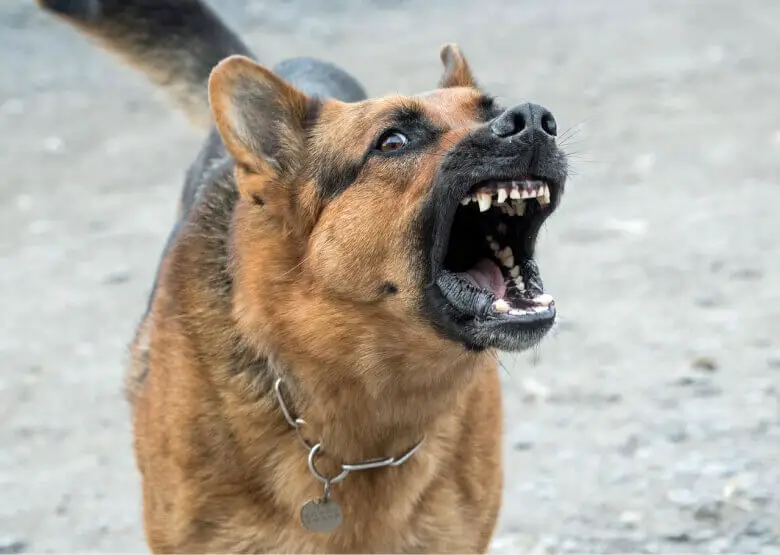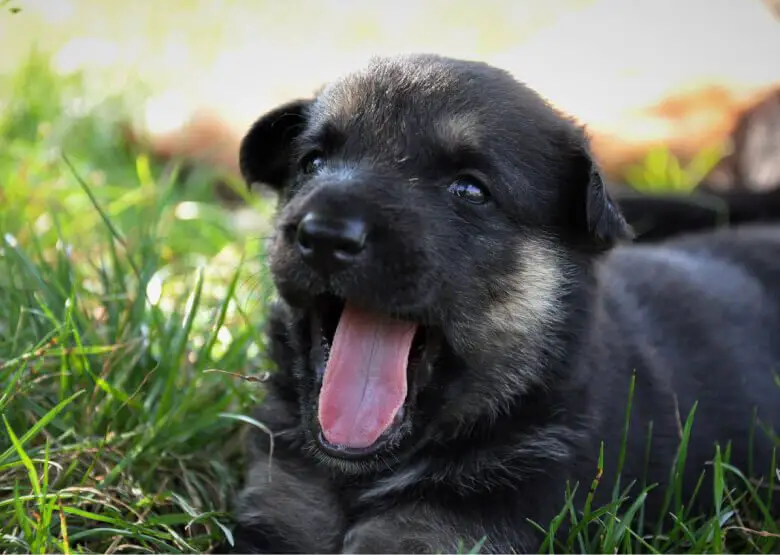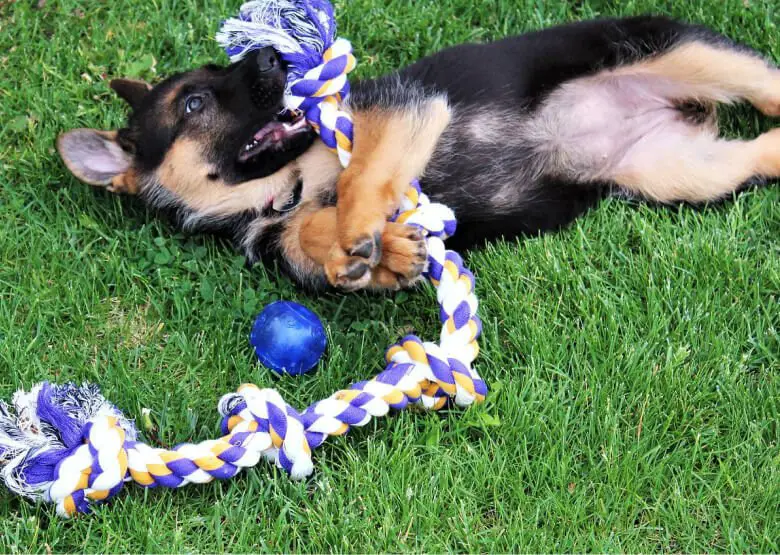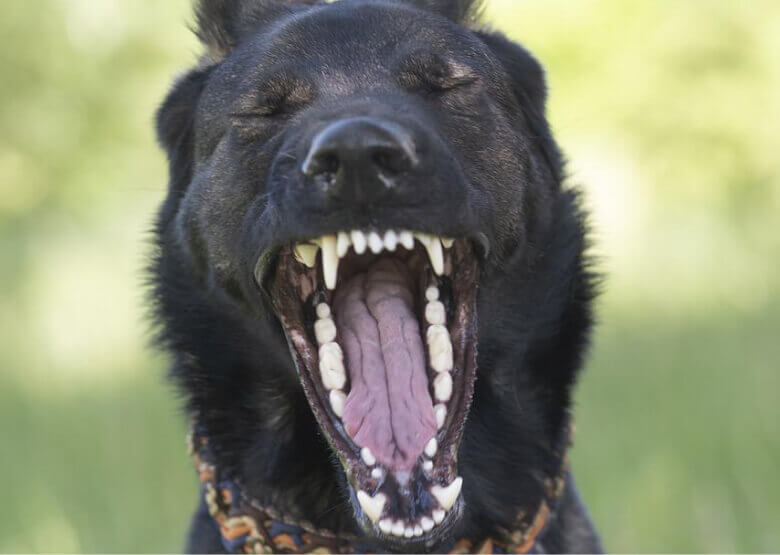Table of Contents
The change of teeth in the German Shepherd begins at the height of the active growth period. From the age of 14 weeks, the puppy rapidly (mostly, intermittently) increases in size. Its muscular skeleton is formed, the paws grow, and the chest and skull bones extend.
Tiny fragile puppy teeth are replaced with impressive strong fangs. This stage usually ends simultaneously with the appearance of a full set of molars. Further development of the dog occurs at a slower pace.
Correct Bite in a German Shepherd
The dental system plays a huge role in the show career of a Shepherd dog. Any non-compliance with the standard, such as undershot or overshot bites, will prevent them from obtaining the champion title, despite the excellent exterior and outstanding working characteristics.
A bite is a form of closing the jaws. The German Shepherd teeth, resembling scissors, are considered the norm: the incisors of the upper jaw cover the incisors of the lower one. There should not be large gaps between them (more than 3 mm/0.118 inch), and they should not touch each other. By 2 months, properly developing Shepherds already have a standard scissor-like bite.
How Many Teeth Does a Shepherd Have?

All puppies are born toothless. Within the process of growth, baby (milk) teeth appear first. They are necessary for the correct formation of jaw bones. At the age of one and a half months already, the Shepherd puppy has a complete set of teeth, consisting of 14 items on each jaw.
The temporary elements of the dentition are divided into incisors, canines (fangs), and premolars.
The puppy does not have chewing teeth; they appear only by the age of six months. If molars erupt along with baby teeth, it means that they will never be replaced. Dogs with such a defect are excluded from the breeding program.
In total, 28 milk teeth should grow before the change. However, deviations in quantity are permissible, both for less and for fewer items. This is not a sign that the puppy will remain edentulous for life. The problem is more likely to resolve on its own over age.
How many teeth should an adult Shepherd have? The answer is exactly 42 items. The absence of any element other than a small premolar is not allowed. Though, there are exceptions to this rule. During protective guard training or too active games, there are frequent cases of damage to the integrity of the teeth under the influence of external factors. Therefore, if documents confirm the traumatic nature of the tooth absence, the show score should not be lowered.
These documents include:
- a certificate from a veterinarian with the description of the injury, testified by the clinic’s seal;
- X-ray.
However, if any experts in incomplete teeth problems do not want to go deeper into the matter, the dog will receive a low score in the ring.
Symptoms of Changing Teeth in a German Shepherd Puppy

Baby German Shepherd teeth begin to change at the age of 3.5 months. First, there is a gradual disappearance of the tooth roots. At the same time, the permanent tooth begins to grow along the canal left by the baby tooth. The fangs and incisors no longer hold tightly in the jaw. They become loose and fall out naturally. The dog’s immunity weakens during this period.
When a German Shepherd puppy’s teeth change, owners may observe the following symptoms:
- Slight increase in body temperature – at 0.1-03 degrees.
- Itching in the gums. The puppy may begin to gnaw on furniture or shoes. This is a natural reaction to the discomfort caused by teething. It is recommended to acquire special toys for chewing or to treat the puppy with beef moss or beef tendon bones.
- Decreased activity. The change of teeth in a Shepherd dog provokes a weakening of the auricles. This phenomenon is caused by the fact that all the reserves of the body go to the formation and growth of new elements of the dental system.
- Ear drop. The ear cartilage becomes soft, ceases to maintain its shape, and the ears which were confidently and steadily standing up only yesterday, sadly drop down. This phenomenon should not cause concern to owners. The ears will rise on their own in a few months.
- Intestinal disorders. If the change of teeth in German Shepherd puppies is accompanied by loss of appetite, apathy, drowsiness, or an acute pain symptom, these may be signs of a viral disease. It is worth taking such a puppy to the vet.
Change of Teeth: How to Cope with It
General recommendations to owners for this period are:
- hold the puppy back from physical activity;
- reduce the time of walks and training sessions;
- hold your pet back from constriction games.
When new fangs are being cut in dogs, it is very easy to spoil the bite by accidentally shifting the growing tooth into the wrong position.
Additional Nutrition During the Change of Teeth
During this period, puppies eating natural food and economy-class feeds are supplemented with mineral nutrition with calcium, phosphorus, and fluorine. If the puppy is fed with dry premium and super-premium class feeds, supplements are included in the diet only on the advice of a veterinarian or breeder. An excess of calcium, as well as its deficiency, can cause an allergic reaction or lead to bone and joint diseases.
In What Order Do Teeth Change?
The incisors grow first. Approximately, it lasts at the age of 3.5 to 5 months. Then, the turn of the fangs comes. They should be expected at the age from 5 to 7 months. Simultaneously with the fangs, chewing teeth (molars) appear. Premolars fall out at the age of 6-8 months.
At What Age Do the Teeth Finish to Grow?

Dogs of large breeds usually tolerate teeth changing faster and easier than small breeds. Therefore, at the age of 8 months, the teeth of a Shepherd dog should completely change.
If permanent canines and molars have not yet grown by the age of 9 months, this may indicate a pathology that requires medical intervention.
Difficulties
The main problem the owners may face during this period include:
- Process slowdown. The reason may be the poor development of chewing muscles, lack of calcium and phosphorus in the body, a previous disease, or a genetic predisposition.
- Two fangs. Simultaneously, 2 fangs grow in one place – a permanent and baby one. This happens because the tooth root did not dissolve in time. In such cases, it is required to contact the veterinarian as soon as possible and remove the interfering tooth. It is not recommended to do it yourself. The undissolved root is large enough, and, likely, the amateur’s intervention will only make things worse. After that, a full-fledged surgical operation may be needed.
To resolve the problem that has appeared and take action on time, you need to regularly examine the mouth, while the puppy is changing its teeth.
Consequences of Violations
The consequences of improper development of the chewing system include not only abnormal teeth setting and a deformed bite. These are caries lesions, early enamel destruction, teeth tartar formation, and others that worsen the life quality of the animal.
The German Shepherd teeth are the true pride of the breed and a formidable weapon. The force of jaw compression at the time of the bite can reach 100 kg (220 lbs), and only a few dogs surpass Shepherd dogs in this indicator. For the dog to demonstrate its working characteristics and win the ring, proper care is needed for its teeth.

